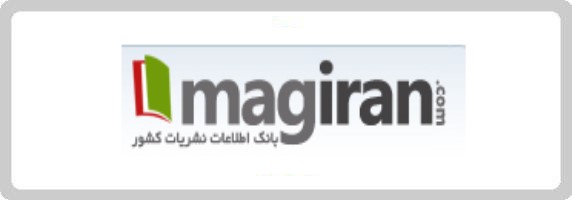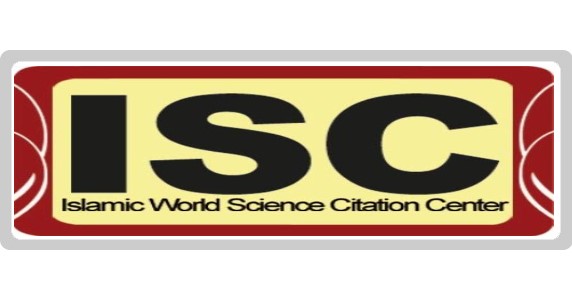طراحی و اعتبارسنجی الگوی راهبردهای بهبود هویت در دانشآموزان دوره اول متوسطه
کلمات کلیدی:
بهبود هویت، توسعه مهارت, حمایت, دانشآموزان دوره اول متوسطهچکیده
هدف: هدف این پژوهش طراحی و اعتبارسنجی الگوی راهبردهای مؤثر در ارتقاء هویت دانشآموزان دوره اول متوسطه بود.
روششناسی: روش پژوهش برحسب هدف، کاربردی، برحسب نوع داده، آمیخته (کیفی-کمی) از نوع اکتشافی، برحسب زمان گردآوری داده، مقطعی و برحسب روش گردآوری دادهها و یا ماهیت و روش پژوهش، در بخش کیفی فراترکیب و تحلیل متون مصاحبه و در بخش کمی توصیفی- پیمایشی بود. جامعه آماری در بخش کیفی و مرحله فراترکیب، کلیه مبانی نظری و پیشینه مرتبط پایگاههای داده داخلی و خارجی بود که با روش حذف سیستماتیک بر اساس مدل پریزما و همینطور روش نمونهگیری غیر تصادفی هدفمند، موردمطالعه قرار گرفتند؛ جامعه آماری در بخش تحلیل محتوا، خبرگان نظری و تجربی بودند که 15 خبره با روش نمونهگیری غیر تصادفی هدفمند بهعنوان مشارکتکننده انتخاب شدند؛ جامعه آماری در بخش کمی، دانشآموزان دوره اول متوسطه شهر تهران بودند که به روش تصادفی خوشهای مرحلهای، تعداد 272 نفر بر اساس محاسبه حجم نمونه در معادلات ساختاری انتخاب شدند. ابزار گردآوری داده در بخش کیفی و مرحله فراترکیب، مرور سیستماتیک ادبیات، و در مرحله تحلیل محتوا، مصاحبه نیمه ساختاریافته بود و در بخش کمی از پرسشنامه محقق ساخته برگرفته از شاخصهای احصا شده از بخش کیفی برای سنجش اعتبار درونی الگو و همینطور پرسشنامه محقق ساخته برگرفته از اجزای الگو برای سنجش اعتبار بیرونی الگو استفاده شد. در بخش کیفی و در مرحله فراترکیب، روایی از طریق چکلیست مدل پریزما و پایایی با ضریب کاپای کوهن و همچنین در قسمت دلفی و تحلیل محتوا روایی از طریق همسویی با پیشینه، محققان و مشارکتکنندگان و پایایی از طریق ثبت دقیق فرایند پژوهش و همسویی درون و بین محققی بررسی شد. علاوه بر این در بخش کمی روایی با روایی محتوایی و سازه و پایایی با ضرایب آلفای کرونباخ و ترکیبی موردبررسی قرار گرفت که در هر دو بخش کیفی و کمی یافتهها بیانگر روا و پایا بودن ابزار بود. روش تجزیهوتحلیل دادهها در بخش کیفی تحلیل مضمون (مضامین پایه، سازمان دهنده و فراگیر) با نرمافزار Maxqda-V2018 و در بخش کمی شامل آمار توصیفی و استنباطی با نرمافزارهای Spss-V23 و Smart Pls-V3 بود.
یافتهها: یافتههای پژوهش نشان دادند که راهبردهای بهبود هویت شامل توسعه مهارت و ارائه حمایت میباشد. سپس بر اساس ابعاد، مؤلفهها و شاخصهای شناساییشده الگوی راهبردهای بهبود هویت در دانشآموزان دوره اول متوسطه طراحی شد و درنهایت اعتبار بیرونی و درونی الگو موردبررسی قرارگرفته شد که یافتهها بیانگر اعتبار مناسب الگوی طراحیشده بود.
نتیجهگیری: نتایج این پژوهش نشان میدهد که طراحی و اجرای راهبردهای بهبود هویت در دانشآموزان دوره اول متوسطه میتواند بهطور قابلتوجهی به افزایش خودباوری، اعتمادبهنفس و احساس تعلق اجتماعی آنان منجر شود.
دانلودها
مراجع
Akbari, A. (2020). Components of Iranian Islamic identity in the intellectual framework of the Supreme Leader. National Studies, 21(3), 63-45. https://sid.ir/paper/374633/fa
Chen, S., Wei, B., & Zhang, H. (2023). Exploring high school students' disciplinary science identities and their differences. International Journal of Science and Mathematics Education, 21(2), 377-394. https://doi.org/10.1007/s10763-022-10257-7
Du, Y., & Qi, Z. (2023). Teacher-Student Relationship and Prospect Identity among Students: The Mediating Role of Social-Emotional Competence and Student Satisfaction. https://doi.org/10.21203/rs.3.rs-3076579/v1
Farahaniyan, S. (2023). Familiarizing students with their identity in the process of education and learning. Journal of Psychology and Educational Sciences, 50, 403-385. https://www.noormags.ir/view/fa/articlepage/2031811/
Hashemian Far, S. A., Ismaili, R., Hashemi, S. Z., & Jalali, M. (2012). Conceptual analysis of national attachment. Social Studies and Research, 1(3), 205-179. https://www.sid.ir/paper/242880/fa
Hong, J., & Perez, T. (2024). Identity and learning: Student and teacher identity development. In Handbook of Educational Psychology. https://doi.org/10.1080/00461520.2023.2292713
Hosseini, S. M. S., & Noori, N. (2023). Components of Islamic social actions and comparison of identity styles based on them. Islam and Social Studies, 40, 68-36. http://jiss.isca.ac.ir/article_73873.html
Khojasteh, F., Azareh, A., Hajiani, E., & Arabi Joonaghani, A. (2021). Investigating the challenges of national identity in the curriculum of the second cycle of secondary education in Iran. Studies in Management and Leadership in Educational Organizations, 1(2), 56-33. https://journals.iau.ir/article_683723.html
Nadernejad, G., Fallahi, M. H., & Alizadeh, A. (2022). Examining and analyzing how identity is represented in the collection of Persian language teaching books; based on Van Leeuwen's theory (2008). Political Sociology of Iran, 27, 8452-8433. https://civilica.com/doc/1552319/
Najafi, H., Maleki, H., Sobhani Nejad, M., & Misdah, A. (2022). The theological foundations of the religious identity curriculum. Quarterly Journal of Research in Islamic Education and Training. https://civilica.com/doc/1552319/
Septaria, K., Fatharani, A., Dewanti, B. A., & Najawa, W. C. (2024). Designing Pirposal-learning based Module integrated with Socio-Scientific Issue to Enhance Students' Scientific Reasoning Skill. Indonesian Journal of Mathematics and Natural Science Education, 5(2), 122-134. https://doi.org/10.35719/mass.v5i2.162
Shah, J. K. (2024). Performing identity: The Pakistani migrant and the arts. In Ethnicity, Religion, and Muslim Education in a Changing World. https://doi.org/10.4324/9781003332237-12
Shamseddini Lari, V., Shamseddini Lari, H., Arabi Joonaghani, A., & Alinajad, M. (2016). A review of national and religious identity based on curriculum dimensions https://civilica.com/doc/498454/
Yelland, N., Bartholomaeus, C., Muspratt, S., Chan, A. K. W., Leung, V. W. M., Soo, L. M. J., & Lim, K. M. (2024). Belonging, student identity and school activity preferences: Views from Year 4 in the global cities of Hong Kong, Singapore and Melbourne. Policy Futures in Education, 22(1), 146-167. https://doi.org/10.1177/14782103221136380
دانلود
چاپ شده
ارسال
بازنگری
پذیرش
شماره
نوع مقاله
مجوز
حق نشر 2025 Mina Soltanian (Author); Ali Mohebi; Ruhollah Karimi Khoyagani (Author)

این پروژه تحت مجوز بین المللی Creative Commons Attribution-NonCommercial 4.0 می باشد.










